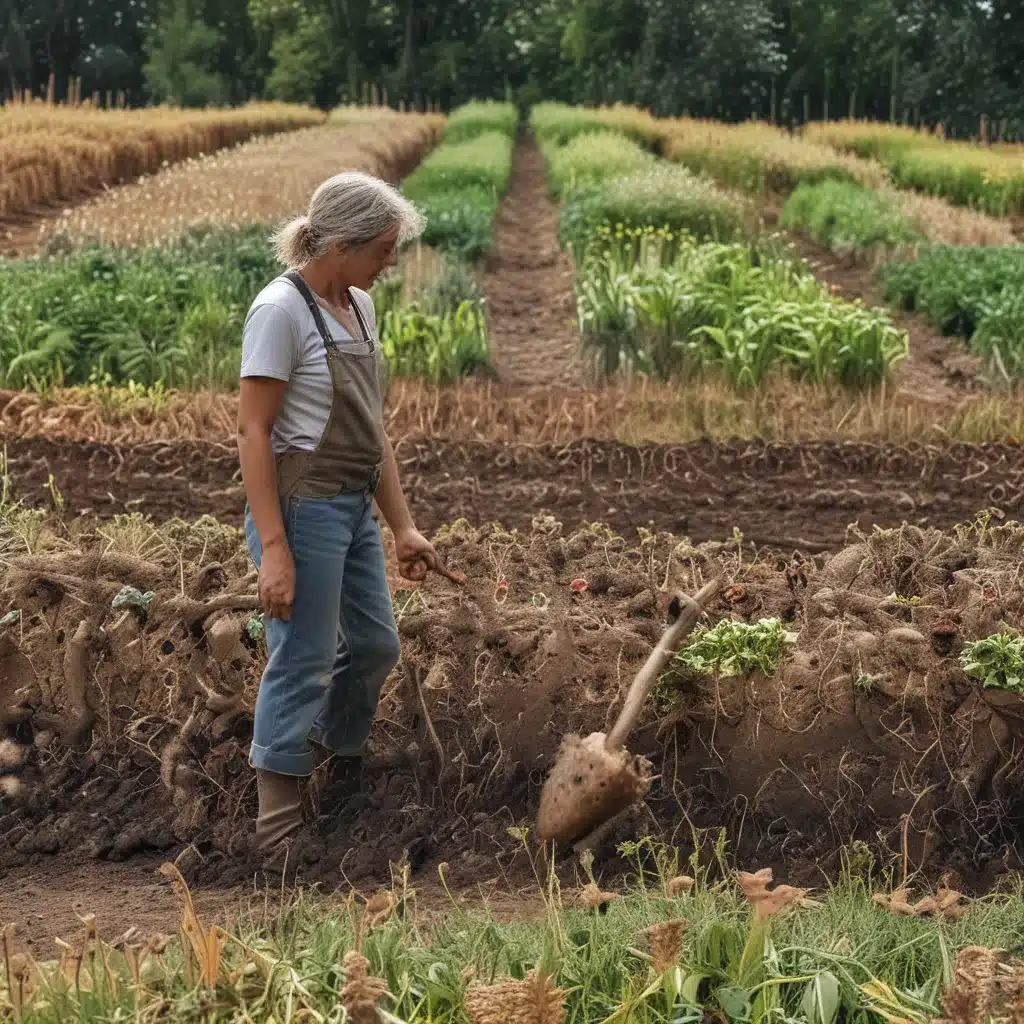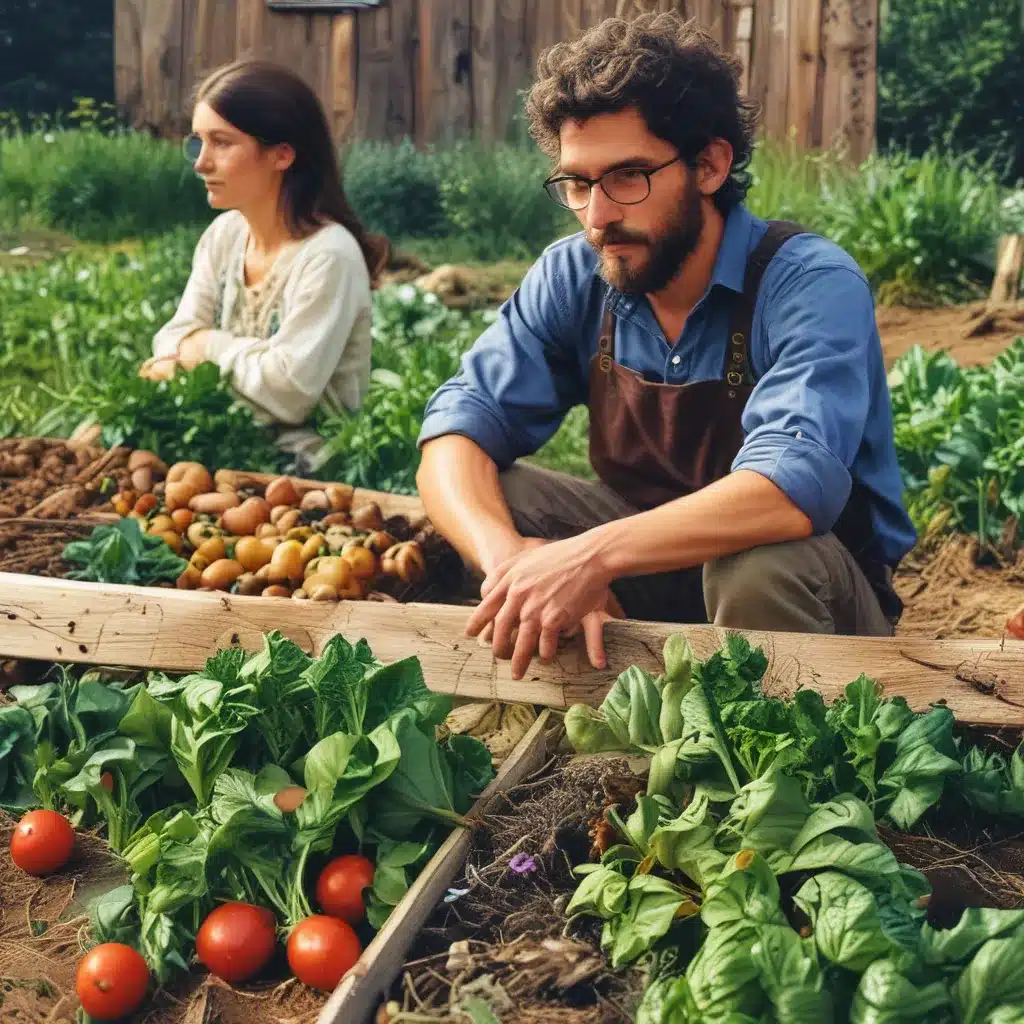
Farming’s Forgotten Connection to Mother Nature
As I stroll through the lush vegetable garden behind Thornapple CSA’s farmhouse, I can’t help but feel a deep sense of reverence for the land. The soil beneath my feet is alive, teeming with microorganisms that quietly work to nourish the vibrant greens and plump tomatoes. It’s a far cry from the lifeless, compacted earth I remember from my childhood on my grandparents’ conventional farm.
You see, my grandparents were part of the generation that bought into the promises of the Green Revolution – higher yields, bigger profits, and freedom from the unpredictability of nature. But in their pursuit of those tempting goals, they inadvertently severed the vital connection between farming and the ecological systems that sustain it. The result? Depleted soils, contaminated waterways, and a mounting climate crisis that now threatens the very foundation of our food system.
Thankfully, there’s a growing movement of farmers, scientists, and everyday food enthusiasts who are working to mend that broken relationship. They’re called “regenerative farmers,” and they’re on a mission to transform our industrialized, nature-extractive approach to agriculture into one that works in harmony with the land. As a member of Thornapple CSA, you’re not just supporting a farm – you’re investing in a vision for a more resilient, sustainable food future.
Regenerative Farming: Restoring the Rhythm of Nature
At the heart of the regenerative farming philosophy is a deep respect for the intricate web of life that underpins healthy soil. Unlike conventional methods that view soil as a mere substrate for growing crops, regenerative farmers understand that soil is a living, breathing ecosystem – a complex community of microbes, fungi, and other organisms that work together to cycle nutrients, regulate water, and support plant growth.
“When you start to look at soil through that lens,” explains Thornapple’s head farmer, Alex, “you realize that the key to sustainable food production isn’t about finding new ways to dominate nature, but rather learning how to work in tandem with it.” That’s why Alex and his team have adopted a suite of regenerative practices, from no-till cultivation to strategic cover cropping, that mimic the natural processes found in undisturbed ecosystems.
According to a report by the UN Food and Agriculture Organization (FAO) and The Nature Conservancy (TNC), these nature-based solutions not only boost agricultural productivity and resilience, but also deliver a triple benefit by mitigating climate change and enhancing biodiversity. In other words, regenerative farming isn’t just good for the land – it’s good for the planet.
The Soil-to-Plate Connection
As I wander through the fields, I can’t help but marvel at the sheer abundance of life. Fluttering butterflies, buzzing bees, and a symphony of birdsong – it’s a far cry from the monoculture deserts that so often characterize conventional farms. And that vibrant biodiversity is just the tip of the iceberg when it comes to the benefits of regenerative agriculture.
“When you start to really understand the importance of healthy soil, you realize that it’s the foundation for everything that ends up on your plate,” Alex tells me as we inspect a lush stand of leafy greens. “The more we can support the natural cycles and processes that occur belowground, the more nutrient-dense, flavorful, and resilient our crops will be.”
Indeed, a growing body of research has shown that organically-grown, regeneratively-farmed foods tend to be richer in essential vitamins, minerals, and antioxidants than their conventionally-grown counterparts. One study found that switching to a diet based on organic, regeneratively-grown foods could reduce your exposure to pesticide residues by up to 90 percent – a significant boon for human and environmental health.
But the benefits of regenerative farming go beyond just nutritional value. By working in harmony with nature, these ecological stewards are also helping to sequester carbon, protect vulnerable watersheds, and create habitat for threatened species. In short, they’re not just growing food – they’re cultivating the resilience of our entire food system.
A Seed of Hope in a Changing Climate
As the effects of climate change continue to intensify, the role of regenerative agriculture becomes ever more crucial. Extreme weather events, shifting rainfall patterns, and the proliferation of pests and diseases are just a few of the challenges that today’s farmers are grappling with. And conventional, input-intensive approaches simply aren’t equipped to handle the level of unpredictability and stress that our food system is now facing.
That’s where regenerative farming steps in. By prioritizing soil health, diversifying crop rotations, and restoring natural habitats, these ecological innovators are building agroecosystems that are inherently more resilient to the shocks and stresses of a changing climate. Research has shown that regenerative practices can significantly improve a farm’s water-holding capacity, reduce erosion, and enhance its ability to withstand drought and extreme rainfall – all critical adaptations in an era of increasingly volatile weather.
But the benefits don’t stop there. Regenerative farming also has the potential to be a powerful tool in the fight against climate change itself. By sequestering carbon in the soil through practices like no-till cultivation and perennial cropping, these farmers are effectively transforming their fields into carbon sinks that can help offset emissions from other sectors of the economy.
“It’s really quite remarkable when you think about it,” Alex muses, gazing out over the lush, verdant landscape. “We have the ability, right here on these farms, to not only feed our communities with nutrient-dense, sustainably-grown food, but also to actively participate in the restoration of our planet. All it takes is a willingness to work with nature, rather than against it.”
Soil Stewards: A Call to Action
As I prepare to head home with my weekly CSA box, I can’t help but feel a renewed sense of purpose and optimism. The path to a more sustainable food future may be long and winding, but the regenerative farmers of Thornapple CSA are demonstrating that it’s not only possible, but profoundly necessary.
By supporting their work, you’re not just investing in a farm – you’re investing in the health of our soil, the resilience of our climate, and the vibrancy of our local food system. You’re becoming a soil steward, a guardian of the very foundations that sustain us all.
So I encourage you to dig deeper, to learn more about the revolutionary potential of regenerative agriculture. Explore the wealth of resources available on Thornapple CSA’s website, attend one of their educational workshops, or even consider taking the leap and becoming a member yourself.
Because when it comes to the future of our food and our planet, we’re all in this together. And by working in harmony with the rhythms of nature, we have the power to cultivate a more nourishing, resilient, and hopeful world.



